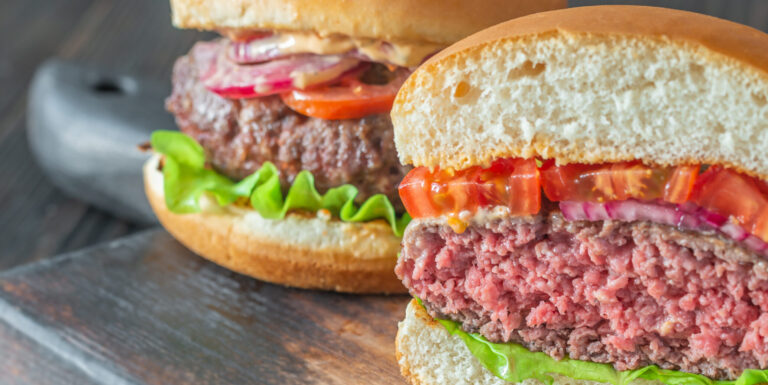I love rare to medium-rare steaks and burgers, but restaurants often won’t serve them that way – especially burgers. Why can’t I get my food the way I like it?
The (very) short answer: E. coli.
The explanation: Escherichia coli (E. coli) O157:H7 is one of the most common pathogens associated with the consumption of beef because the bacteria that is naturally found in even healthy cattle’s intestinal tracts can get on the outer surface of the meat cuts during slaughter and processing. Salmonella and Campylobacter from feces can also contaminate meat but are less commonly associated with beef.
Steaks. While rare steaks are risky, medium rare can be safe, depending on the temperature by which medium rare is defined. To be safe, the steak’s surface temperature should reach at least 160°F to kill any surface bacteria, and the steak cooked to an internal temperature of at least 145°F, then left to rest for about 3 minutes. The exception to this is if the steak has been needle or blade tenderized which is a technique that pushes small needles or blades into the raw meat during processing. This technology, while good at tenderizing the meat, does pose the potential risk of pushing surface bacteria inside the meat. Thus creating risk if the internal temperature of the meat does not reach a high enough temperature – ideally 160°F.
Ground beef. Ground beef, however, must be cooked to a higher temperature – at least 160°F throughout – to be considered safe. This is because when the beef is ground, the meat is all mixed together and any bacteria that had been on the surface of the meat gets distributed throughout the product. So, if the internal temperature of a burger does not reach at least 160°F, the bacteria is not killed, and severe food poisoning can result. Restaurants also may be reluctant to serve rare meats because the U.S. Food Code requires that food be properly cooked to “time/temperature control for safety food, being particularly careful in cooking those foods known to cause severe foodborne illness and death, such as eggs and comminuted (e.g., ground) meats.” Although the code allows for the serving of rare meat “upon consumer request,” the consumer is to be informed that the food should be cooked to proper temperatures to ensure its safety.
A few additional points:
- Temperature should always be measured by a food thermometer. Neither color nor texture is a guarantee of doneness.
- There’s no way to guarantee the safety of rare meat, especially for people who are at higher risk such as pregnant women, children, older adults, and people with weakened immune systems.
- Other ground meats, such as veal, pork, and lamb, hold similar pathogenic risks as ground beef, so they should also be cooked to at least 160°F.





